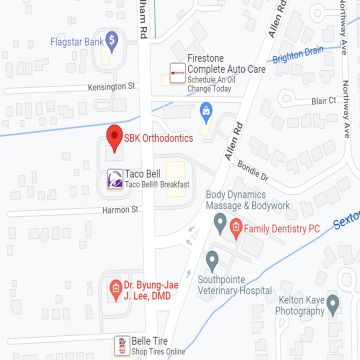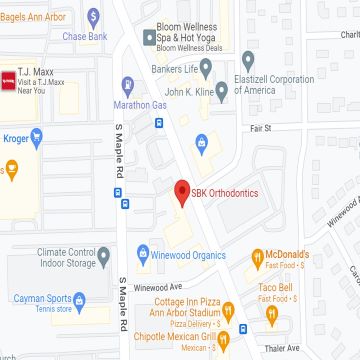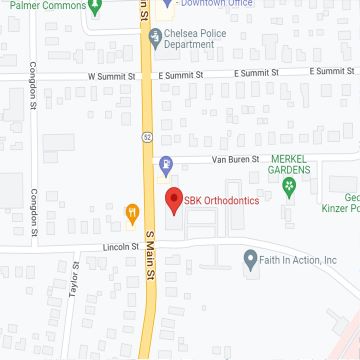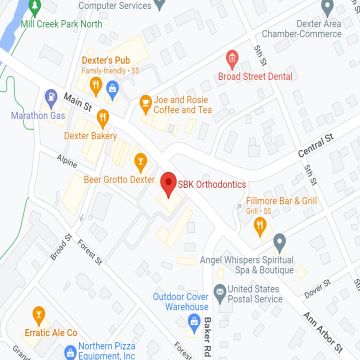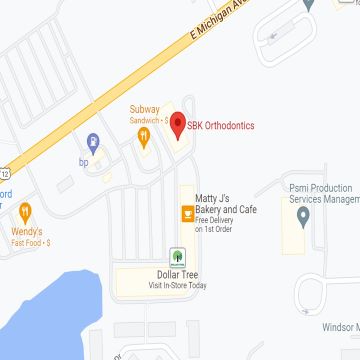6 Facts About Two-Phase Orthodontic Treatment

Early orthodontic treatment, otherwise known as an essential component of two-phase treatment, is the best way parents can ensure their children get all the help they need to overcome dental development problems. Board-certified orthodontists recommend you bring your kids to a qualified and trusted orthodontic office, such as SBK Orthodontics in Ann Arbor, to let specialists oversee their jaw growth and dental development while spotting any signs of orofacial or skeletal problems in their early years.
This stage of orthodontics, also labeled as interception orthodontic treatment, aims to identify and correct developing bite problems before they affect your child too deeply. Any sign of malocclusion, especially a medical history of parents or grandparents with an overbite, underbite, or any type of misaligned bite, will be a determining factor in planning the best orthodontic treatment possible to help your kid have a beautiful and healthy smile.
The sooner the kid starts, the better the treatment will be. Since your child’s jawbones are actively growing between the ages of 4 and 11, our orthodontists can help direct the growth process, correct misalignment problems, and set the stage for additional treatment during your child’s teenage years that is considerably more comfortable and efficient. Ann Arbor Early orthodontics can help prevent several dental extractions during orthodontics, and it doesn’t have to involve metal braces, so your child can rest easy knowing a single visit to the orthodontist won’t mean getting braces right away.
6 Facts About Two-Phase Orthodontic Treatment Parents Should Know
Hi, parents! Early orthodontics is not one of the most popular names associated with orthodontics, but it should be. To help out, we want to compile a few facts you should know about two-phase orthodontics and how it can greatly benefit your family. Let’s take a look right here:
1. What Is the Purpose of Interceptive Orthodontic Treatment?
Interceptive orthodontic treatment influences the growth and orofacial skeletal development to create enough space for teeth to erupt and align properly. As this process advances, your kid may not need dental extractions during orthodontics.
It Is Much Easier for Everyone
Because we start a few years before most teenagers start wearing metal braces, we can leverage natural jaw and teeth movements, making the entire experience much more comfortable. Besides, we can spot signs of incoming problems before the patient is a teenager, allowing us to plan ahead.
It Improves Your Child’s Appearance
School can be difficult, but early orthodontics can help boost a child’s confidence. As we address skeletal imbalances and dental malalignment, your kid’s facial appearance will change. You should also consider that the sooner your kid starts treatment, the sooner they will also finish it, meaning they can go take their high school yearbook photos without worrying about traditional metal braces on their teeth.
Early Orthodontics Isn’t Just About the Looks
Correcting a malocclusion can positively affect the way your kid chews, smiles, maintains good oral hygiene, and their overall self-esteem. After all, well-aligned teeth are much easier to keep clean, and they look better in photos.
It Can Correct Bad Habits for Teeth
Sometimes, orthodontics is not about bonding metal brackets to a patient’s teeth and waiting for several months to see the results. Rather, orthodontic treatment can also help correct bad oral habits that create dental alignment problems, such as tongue thrusting and prolonged pacifier use or thumb sucking. Children’s harmful oral habits can cause poor bone or orofacial skeletal development, but early orthodontic treatment can help correct them.
2. When Should a Child Start Orthodontic Treatment?
The American Association of Orthodontists (AAO) suggests every parent bring their kids to an orthodontist by age 7. This is because, during ages 6 to 14, children’s teeth and jaws are still growing. It is of particular interest to orthodontists that children around these ages have a mixed dentition, meaning they have both permanent and baby teeth in their mouths, which creates a very forgiving window of opportunity to start correcting skeletal development problems.
Rest assured, because bringing your kid at age 7 won’t mean they’ll get braces right away. There are several appliances we can use instead of braces to ensure there’s enough space for their teeth to grow in and create a beautiful smile.
3. What Is Phase 1 Orthodontic Treatment?
Typically starting between ages 6 and 9, this is the phase of orthodontic treatment that starts as your kid enters the mixed dentition stage, which is defined by the presence of the baby and permanent teeth. This treatment phase begins with the oversight of your kid’s dental development and determining if there are any worrying signs of jaw growth or dental development problems.
Some cases are self-explanatory, as happens with treatment for cleft lip and palate, but other cases can be more difficult to pinpoint. Think of the help your kid can get to overcome the prolonged use of a pacifier or thumb-sucking to prevent dental alignment problems.
Ultimately, we want to ensure there is enough space for your kid’s permanent teeth to erupt and avoid dental alignment problems.
4. What Is Phase 2 Orthodontic Treatment?
As your kid enters their teenage years, we will switch to more traditional treatment options, such as metal braces or Invisalign clear aligners for teenagers. This phase doesn’t deal with preventing problems. Rather, it focuses on correcting misaligned teeth and fixing jaw malocclusion. Young teenagers aged 11 or 12 will come for a consultation with an orthodontist and get a set of orthodontic appliances that will realign their teeth in a 12- to 24-month period.
Please bring your teenager to a qualified orthodontist to determine how long their treatment will take and what you can expect from it.
5. Two-Phase Treatment Can Begin With Invisalign First
Ann Arbor Invisalign has age-appropriate solutions for your young kids, meaning they can use Invisalign first as a treatment when they’re aged 6-10. These BPA-free plastic and removable aligners will gradually push your kid’s teeth into the right alignment to make the second phase of treatment much more comfortable. Fortunately for kids, beginning their treatment at such an early age is not difficult at all. Your kid can come to any of our locations, and we’ll take a quick and accurate digital scan of their teeth with our 3D scanner. Then, we send that model to a lab, and your kid can begin wearing their customizable aligners in no time.
6. What Is Invisalign Teen?
These clear and removable aligner trays are custom-made for each patient and have a few tricks that help teenagers keep track of their progress with the convenient treatment option they choose. As you may already have figured out, two-phase orthodontics won’t end when your child becomes a teenager. In fact, the most demanding part of the treatment happens during your child’s teenage years. Your teenager will have to wear their aligners for 20 to 22 hours every day, and a little tab will change color to indicate exactly when they should swap to a new set and continue the treatment progression.
What Is the Best Age for Orthodontic Treatment?
Two-phase orthodontic treatment is something you want to start when your kid is young. Please remember that you should take your kid to an orthodontist in Ann Arbor, such as our team here at SBK Orthodontics, no later than age 7. However, there is no age limit to start your dental alignment treatment.
Kids have it easier, and parents should bring their kids for a free appointment with our team to find ways to make their treatment much more comfortable and efficient.
Still, adults shouldn’t be discouraged and, instead, come for their own complimentary consultation with our team; adult orthodontics is worth it, and you should start your dental alignment journey as fast as possible.
We highly recommend adults come for a consultation as well because teeth have a natural tendency to move and shift positions as we age. Besides, your risk of suffering from the negative effects of tooth decay, cavities, and gum disease will increase as you age. Beat the odds and come for orthodontics in Ann Arbor to help improve your oral health and how easy it is to maintain good oral hygiene.
Get Help From the Best Orthodontist Ann Arbor Has
You’ll want to give us a phone call at our Ann Arbor orthodontic office by dialing 734-662-7200. Get in touch with our team and set up an appointment at a time and date that works best for you. We’ll love having you around and start working with your child to identify any incoming orthodontic problems.
When it comes to oral healthcare, prevention is key. So, make sure to act when the time is right and bring your kid by age 7 to start their two-phase orthodontic treatment with a team that values every kid’s smile.
And remember! If you can’t make it to our office in Ann Arbor, you can still visit our locations serving Chelsea, Dexter, Saline, and Taylor, MI. SBK Orthodontics is here for you and all your family! See you around!




